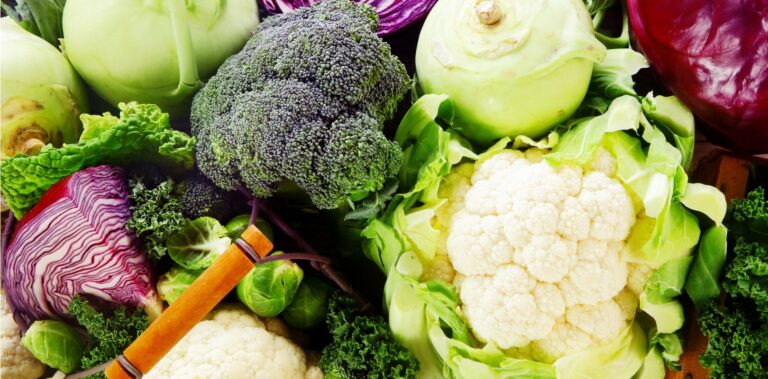Vegetables are an essential part of a healthy and balanced diet. They are a great source of essential nutrients like vitamins, minerals, and fiber. There are many different types of vegetables, each with its unique characteristics and health benefits. However, vegetables can be categorized into several families based on their botanical relationships and characteristics. Understanding these families can help you plan your garden and your meals better. In this article, we will explore the different families of vegetables.
The Families of Vegetables:
- Nightshade Family: The nightshade family, also known as the Solanaceae family, includes some of the most popular vegetables like tomatoes, peppers, and eggplants. These vegetables are known for their fleshy fruit and spicy flavor. However, some members of this family are toxic, like the deadly nightshade, so it’s essential to be cautious.
- Brassica Family: The Brassica family, also known as the Cruciferous family, includes vegetables like broccoli, cauliflower, cabbage, kale, and Brussels sprouts. These vegetables are known for their high nutrient content, particularly vitamins C and K. They also contain sulfur compounds that provide health benefits, like reducing the risk of cancer and heart disease.
- Cucurbit Family: The Cucurbit family includes vegetables like cucumbers, pumpkins, zucchinis, and squash. These vegetables are known for their high water content and low calorie count. They are also rich in vitamins and minerals like potassium and vitamin C. Cucurbits are typically grown during the warm months of summer.
- Allium Family: The Allium family includes vegetables like onions, garlic, leeks, and shallots. These vegetables are known for their pungent aroma and distinct flavor. They are also rich in antioxidants that help reduce the risk of heart disease and cancer.
- Root Family: The Root family includes vegetables like carrots, beets, radishes, and turnips. These vegetables are known for their high fiber content and sweet flavor. They are also rich in vitamins and minerals like vitamin A, folate, and potassium.
- Leafy Greens: The Leafy Greens family includes vegetables like spinach, lettuce, and Swiss chard. These vegetables are known for their high nutrient content, particularly vitamins A and K. They are also low in calories and high in fiber, making them an excellent addition to any diet.
Comparison Table:
| Vegetable Family | Examples of Vegetables | Characteristics |
|---|---|---|
| Nightshade Family | Tomatoes, peppers, eggplants | Fleshy fruit, spicy flavor |
| Brassica Family | Broccoli, cauliflower, cabbage, kale, Brussels sprouts | High nutrient content, sulfur compounds |
| Cucurbit Family | Cucumbers, pumpkins, zucchinis, squash | High water content, low calorie count, rich in vitamins and minerals |
| Allium Family | Onions, garlic, leeks, shallots | Pungent aroma, distinct flavor, rich in antioxidants |
| Root Family | Carrots, beets, radishes, turnips | High fiber content, sweet flavor, rich in vitamins and minerals |
| Leafy Greens | Spinach, lettuce, Swiss chard | High nutrient content, low in calories, high in fiber |
Which Are The Top Consumed Vegetables?
The top consumed vegetables vary depending on the region, culture, and cuisine. However, some of the most popular and commonly consumed vegetables worldwide include:
- Potatoes: Potatoes are a staple food in many parts of the world and are eaten in various forms, such as mashed, baked, boiled, or fried.
- Tomatoes: Tomatoes are widely used in salads, sauces, and dishes such as pizza and pasta. They are also rich in vitamins and minerals.
- Onions: Onions are used as a flavoring ingredient in various dishes, and they also have numerous health benefits.
- Carrots: Carrots are rich in vitamins and are often consumed as a snack, in salads, or as a part of cooked dishes.
- Cucumbers: Cucumbers are low in calories and high in water content, making them a popular choice for salads and snacks.
- Lettuce: Lettuce is a popular leafy green vegetable used in salads, sandwiches, and wraps.
- Broccoli: Broccoli is a nutritious vegetable that is often steamed or roasted and consumed as a side dish or added to salads.
- Peppers: Peppers come in various colors and are used in various dishes, such as stir-fries, salads, and as toppings on pizzas.
- Spinach: Spinach is a leafy green vegetable that is high in iron and other nutrients. It is often used in salads and cooked dishes.
- Green beans: Green beans are a popular side dish and are often consumed steamed or boiled.
It is important to note that this list is not exhaustive, and there are numerous other vegetables that are popular in different parts of the world. Additionally, individual preferences and dietary requirements may also influence the choice of vegetables consumed.
Conclusion:
Vegetables are an essential part of a healthy diet, and understanding the different families of vegetables can help you plan your garden and your meals better. The different vegetable families have unique characteristics and health benefits, so it’s essential to incorporate a variety of vegetables in your diet. By including a diverse range of vegetables in your meals, you can reap the many health benefits that vegetables have.
Originally posted 2023-02-08 00:35:34.


